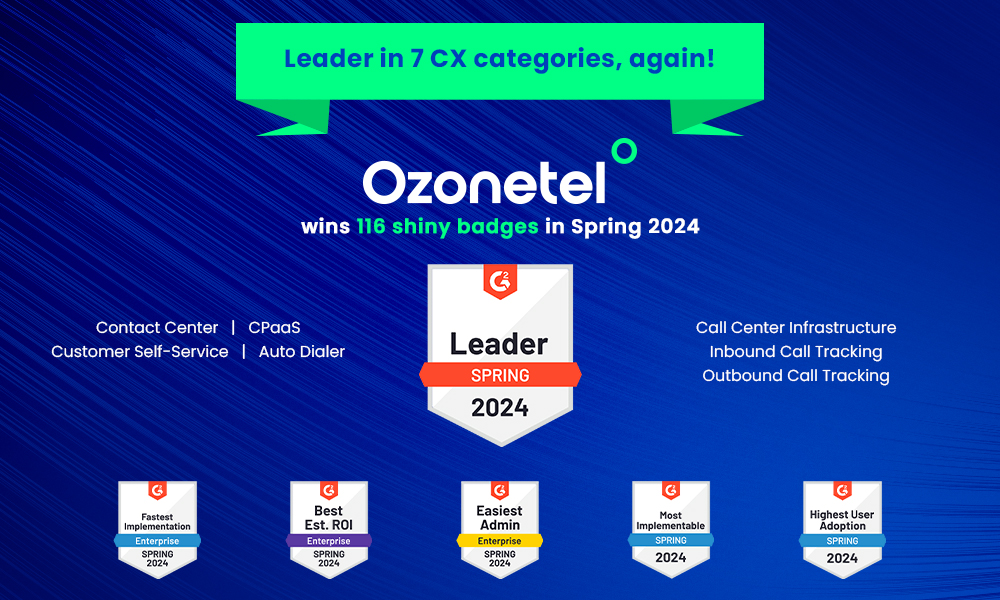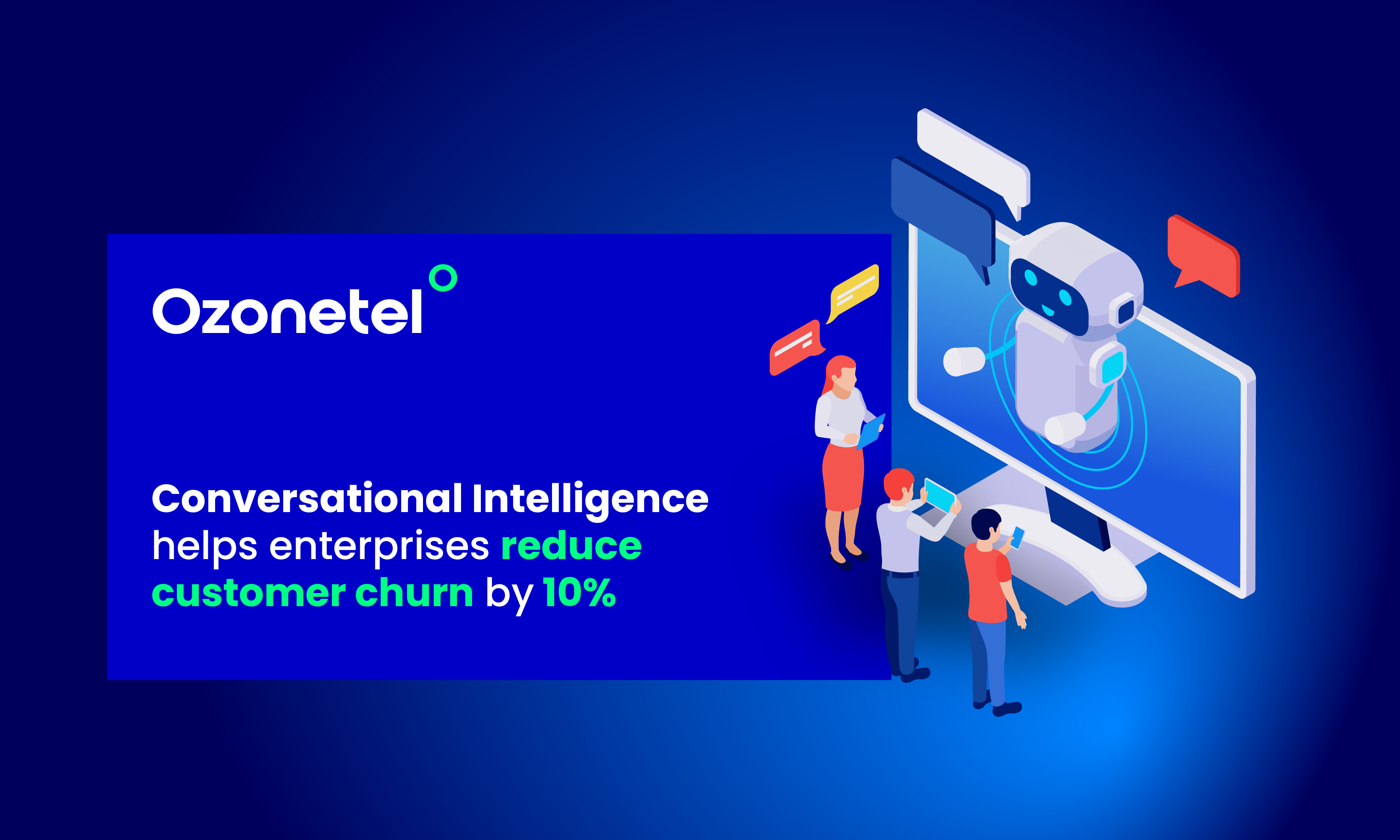- Resources
- Effortless CX in Fintech — Insights from BharatPe, Razorpay, Pagarbook, and More
Effortless CX in Fintech — Insights from BharatPe, Razorpay, Pagarbook, and More

Over the last few years, disruptions caused by global events have accelerated the pace of digitization and reshaped consumer behaviors and expectations, placing a significant emphasis on how businesses engage and serve their customers. Unsurprisingly, after all the upheaval, customer experience is now more critical than ever before.
According to a survey conducted by Gartner, an overwhelming 81% of companies reveal that they now compete primarily based on Customer Experience (CX). This proves that customer-centricity is the decisive factor in determining customer satisfaction and loyalty. A positive experience is the least consumers expect today. A study conducted by Deloitte suggests that “customer spending increases up to 140% following a positive experience.”
In this article, we will explore:
Focusing on CX is no longer optional!
This shift, especially in a large, diverse, and complex market such as India, has emphasized the need for organizational agility, preparedness and ability to meet evolving customer needs, wants and expectations.
One industry that has both felt and contributed to this dynamic shift in customer expectations is the financial services and fintech industry. Here firms need to balance regulatory demands, compliance, and data security with customers’ desire for convenience and efficiency. So, how are fintech firms designing effortless customer experiences? How are they improving personalization across the customer journey? How are they scaling up while maintaining the ‘human touch’?
We discussed all this and more at a riveting roundtable: ‘Effortless CX: How Fintech Companies are Transforming CX’, held in conjunction with Freshworks and Brainalytics. The diverse panel of thought leaders included:
Vikrant Saini, Head – Customer Engineering, Razorpay.
Rajat Jain, CPO – Lending & Consumer Products, BharatPe.
Asutosh Mohapatra, SVP – Head of Business, PagarBook.
Ujjala Katta, Manager – Solution Engineering, Freshworks.
Sagar Rane, Vice President – Sales, Ozonetel.
Garima Gayathri, Ozonetel.
What Challenges Do Fintech Brands Face in Creating Effortless Customer Experience (CX)?
Designing customer-centric journeys poses challenges due to the need to align various touchpoints, systems, and departments, while continually adapting to evolving customer preferences. Here are four major challenges faced by the Fintech firms:
Mitigating Delays in Customer Service
“The biggest challenge with customer experiences is that you cannot delay things,” said Rajat Jain. When an issue comes up, you simply can’t lax, you must resolve it immediately. To resolve this challenge, fintech firms must ensure that every vertical within the organization is aligned and speaks the same language, right from the application development team to the customer relationship management (CRM) team, and even the personnel responsible for sending emails.
When all departments and teams work in harmony, sharing a common understanding of technical requirements, customer needs, and business objectives, it becomes much easier to communicate effectively and deliver a seamless experience to the customers.
Ensuring Customer Empathy at Every Step
While AI bots and automated systems have their advantages, there are certain situations where they may fall short in providing the personalized and empathetic support that human agents can offer.
“When you don’t have the human touch in resolving issues for your customers, you tend to experience dissatisfaction,” said Vikrant Saini. You cannot achieve a state of “nirvana” when it comes to customer service, he added. It involves continuous change and improvement.
And human empathy isn’t something that is relegated to your agents or frontline workers alone. It needs to be strategic. The journey begins with identifying customer expectations and pain points. Net you must create actionable frameworks, and finally implement your strategy. And every step is riddled with potholes. You must continually align and review your goals to ensure that the result is something that matters to your customer.
When it comes to building relationships and engagement, as Sagar pointed out you must prioritize customer-centricity and empathy at every touchpoint.
Navigating the Complexities of Security and Compliance
Ensuring data security and compliance is another critical aspect of fintech industry, the panel observed. Compliance with data security regulations is essential to maintain the confidentiality, integrity, and availability of sensitive data.
“Platforms need to be protected and accessible only within a relevant network and to the relevant people, to ensure data security,” said Ujjala Katta. At the same time agents must have access to data that provides a 360-degree context to create that personalized experience remotely. Knowledge and communication should be consistent across all touchpoints.
Breaking Silos and Streamlining Processes
A unified view of the customer’s journey is often a competitive advantage for Fintech firms. The challenge is that when using tools and software from different vendors, you could end up with a disjointed system that leads to data loss and inefficiency. In contrast, integrating CRM, chat, call solutions, and ticketing can streamline processes and enhance overall efficiency.
AI-powered solutions can also help by analyzing data and automating workflows across the customer journey. Features like personalized IVR could reduce agent load, increase efficiency and lead to more successful campaigns. Automation has become key when it comes to scaling up. Fintech firms are finding ways to effectively balance AI and ‘human touch’ in a scalable and cost-effective manner.
Maintaining Cost Viability while Delivering Superior CX
“Another key challenge is optimizing costs while ensuring the customer experience remains up to the mark,” said Sagar. While cost optimization is essential for the financial health of a business, it should not come at the expense of compromising customer satisfaction.
The synergy between financial prudence and delivering exceptional customer experience creates a competitive advantage and fosters long-term customer loyalty.
How Leading Fintech Firms Overcome Challenges and Prioritize Effortless & Customer-centric CX
During the discussion, the fintech leaders laid emphasis on putting customers at the heart of every decision. Understanding customer needs and preferences is crucial for achieving lasting success.
Key Insights for Superior CX
- Embrace a Product-Led Approach & Proactive Solutions
- Adopt an Omnichannel Approach
- Continually Improve and Align
- Invest in Building Trust
Following are the insights shared by panelists that can help Fintech firms overcome challenges and deliver superior customer experience.
Embrace a Product-Led Approach & Proactive Solutions
As Rajat pointed out “Digital has changed user behavior, and everybody wants everything instantly. If you do not provide something to the user, they will leave you and go somewhere else.”
The solution is to preempt problems and solve them for customers in a product-led manner.
Fintech firms today must design CX strategies that are one step ahead. A relevant CX strategy is one that is proactive and not simply reactive!
Along with support and service elements, keeping the customer chain valuable is key to creating and managing awareness, empowering customers to make better purchasing decisions and reducing customer churn. A product-led approach needs to work in tandem with a service-led approach, for firms to stay relevant.
Adopt an Omnichannel Approach
“The combination of digital transformation, adopting technology, and the pandemic has revolutionized customer experience.” As Ujjala shared, trends for customer engagement have truly evolved, more so with the largely millennial and digitally-native customers that are using financial apps today. Furthermore, a ‘want it now’ culture has given rise to the need for solutions and assistance on the digital channels, messaging apps, and social media platforms that customers frequent.
A true omnichannel customer journey is the need of the hour. The panelists all agreed that personalized experiences across these channels, while ensuring conversational continuity was the key to better customer experience and satisfaction.
Continually Improve and Align
In designing our CX strategy, our main objective is to add new, competitive products to the market while stabilizing existing products and systems, Vikrant shared. Razorpay focuses on continually improving existing products and systems to reduce customer churn and accelerate turnaround times for query resolutions.
There are times when business teams struggle to accurately translate the technical requirements and objectives provided by the technical teams, making it challenging for them to convert this information into a language that is easily understandable by customers and stakeholders. To solve this issue, we have established a command center team responsible for monitoring critical alerts and communicating with the business promptly.
Despite challenges, they have significantly accelerated processes by eliminating infrastructure outages and minimizing merchant-related or bug-related issues. “Our mean time to acknowledge incidents is less than 1 minute, ensuring swift action, and engaging stakeholders within the same timeframe,” explains Vikrant. By bridging the gap between technical and business teams, they aim to create a seamless CX that effectively translates technical requirements into customer-friendly language, ensuring customer satisfaction and stakeholder alignment.
Invest in Building Trust
Financial services and the inherently sensitive nature of the information it entails brings up an issue of trust. More so when peppered with skepticism among consumers about using new digital technology. Bridging this trust gap is essential to building stronger relationships.
“You cannot buy trust, trust is earned.” – Asutosh
As Asutosh explained, organizations must bridge this trust gap by ensuring that along with investing in omnichannel and digital, there must be human interactions. And as the panel agreed, you must enable your customer-facing teams with the right set of support APIs and knowledge management tools.
But eventually, achieving an effortless Customer Experience (CX) goes beyond solely relying on technology. By emphasizing the involvement and awareness of every stakeholder, businesses can create a cohesive and customer-centric ecosystem. Each stakeholder’s positive experience, whether it’s customers, employees, or partners, plays a crucial role in shaping the overall CX and influencing the success of the organization.
In Conclusion
CX is at the heart of the fintech business today. And achieving a harmonious CX requires collaboration and alignment among various organizational teams. Moreover, a customer-centric culture, fostered by positive experiences across all touchpoints, creates a virtuous cycle of loyalty and advocacy.
When every stakeholder is invested in delivering a superior CX, it reinforces the company’s reputation and strengthens its position in the market. What is your experience when it comes to creating CX journeys that count? Watch this engaging and information-packed session at:
Ready to take control of your call transfer
experience for better CX outcomes?
Rakesh Kr Jha
Rakesh, a senior writer at Ozonetel, draws on his decade-long journalism career to write about techn...







